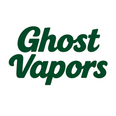Hemp 101: Oct 21st Deep Dive — THCA vs Delta-9 and What Tests Really Show
🔬 Understanding the Basics
THCA and Delta-9 THC are chemically related, but they behave very differently — especially under heat. THCA, short for tetrahydrocannabinolic acid, is the non-psychoactive form of THC found naturally in raw hemp flower. When heated — through smoking, vaping, or baking — THCA converts into Delta-9 THC, the compound responsible for the euphoric “high.”
This transformation is known as decarboxylation, and it’s the main reason why THCA flower can test legally compliant as hemp yet still deliver traditional cannabis effects once consumed.
🌿 THCA vs Delta-9: The Legal Divide
Under the 2018 Farm Bill, hemp is defined as any cannabis plant containing less than 0.3% Delta-9 THC by dry weight. The law doesn’t specifically limit THCA, which has allowed THCA-rich hemp to be sold legally across most states.
However, as THCA converts to Delta-9 when heated, many regulators and testing labs now argue that total potential THC — including both forms combined — should determine whether a product is truly compliant. That’s where the confusion begins.
A flower sample might pass a compliance test today under federal standards but fail tomorrow if the state switches to total THC calculations. The difference lies not in the plant itself, but in the math behind the analysis.
⚗️ What Lab Tests Really Show
When you look at a Certificate of Analysis (COA), you’ll often see separate columns for “THCA” and “Delta-9 THC.” To understand total potency, labs use a formula that estimates how much THCA will convert into Delta-9 after decarboxylation.
This is why a strain testing at 25% THCA but only 0.2% Delta-9 can still be sold as legal hemp. On paper, it meets the federal limit. But once heated, that same flower effectively produces over 20% active THC — identical to what you’d find in dispensary cannabis.
The testing system isn’t broken — it’s just incomplete. Each lab may use slightly different conversion rates or testing conditions, meaning two reports on the same batch could produce noticeably different results. Transparency and consistency are critical, which is why reputable hemp brands share their full COAs, including both raw and converted THC data.
⚖️ Why It Matters for Retailers and Consumers
For shop owners, knowing how to read a COA can be the difference between compliance and violation. Always pay attention to the distinction between Delta-9 THC and total THC, and keep copies of updated lab reports available for regulators and customers.
For consumers, the key takeaway is simple: THCA flower isn’t fake cannabis — it’s just hemp in disguise. It offers the same cannabinoids, terpenes, and experience as traditional marijuana, with one crucial difference — its legality depends entirely on how the test is interpreted.
🔮 The Bottom Line
THCA and Delta-9 are two sides of the same cannabinoid coin. The science is straightforward, but the laws are not. As more states push for “total THC” rules, hemp growers and retailers face a future where compliance will depend on precise lab data and proactive transparency.
For now, THCA remains a vital bridge between hemp and cannabis — proof that innovation can thrive even within narrow legal limits.
👻 Ghost Vapors Hemp 101 is here to break down the science, the standards, and the truth behind every label — because understanding hemp starts with knowing what’s really in your flower.


